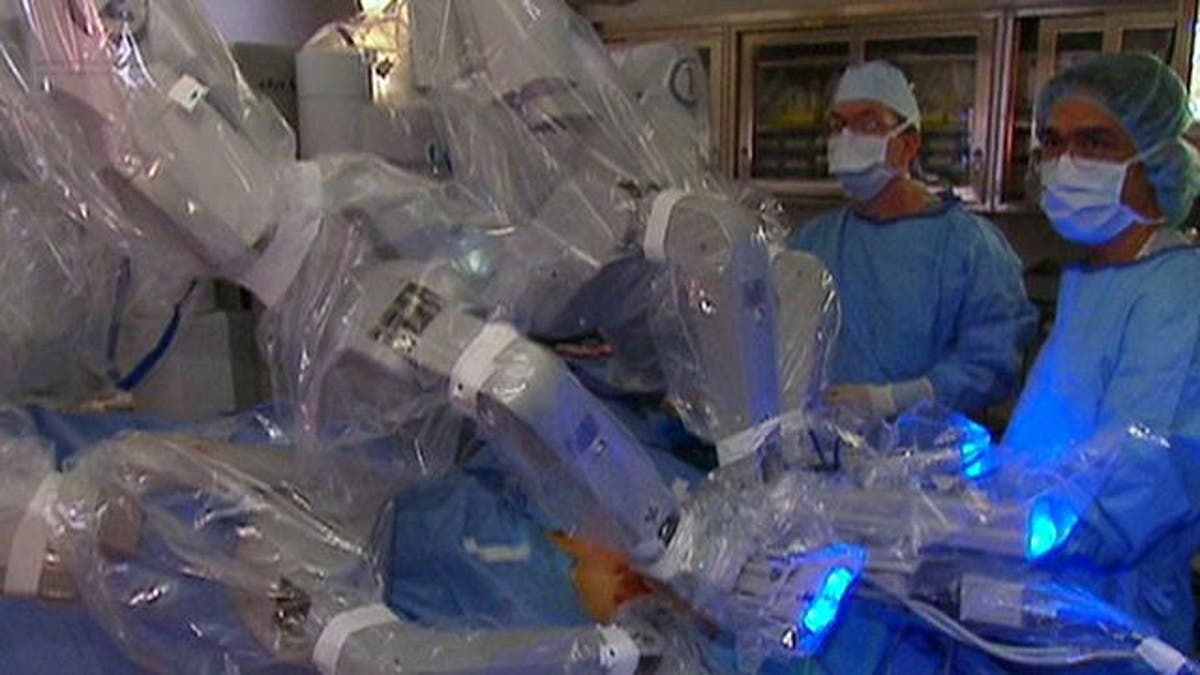
NEW YORK – The introduction of robotic surgery for prostate cancer may have led to changes in the number of surgeons performing prostate removals and in the overall cost, according to a new study.
With the technology being used more widely, fewer doctors are performing the procedure and the overall cost of prostate removal has gone up, researchers found.
While studies examining the benefits and potential harms of robotic surgery have produced mixed results, the researchers write in BJU International that there is little information on how the innovation influenced prostate removal in the U.S.
"We knew by anecdotal reports as well as the scientific literature that it had become relatively widespread but we didn’t know how that had been done,” said Dr. Steven Chang, the study’s lead author from Harvard Medical School, Brigham and Women’s Hospital and the Dana-Farber Cancer Institute in Boston.
Robotic-assisted radical prostatectomy, which is the removal of the prostate with the help of a robot, began after U.S. regulators approved Intuitive Surgical, Inc.’s da Vinci Surgical System in 2000.
Before that, surgeons would remove the prostate through a relatively large incision in so-called open surgery - or through a small incision with the help of a camera, in laparoscopic surgery.
For the new study, the researchers used data on nearly 490,000 men who had their prostates removed between 2003 and 2010. Of those, 338,448 had open or laparoscopic surgery and 150,921 had robotic-assisted surgery.
Overall, there was a dramatic increase in the number of prostate removals with the new technology. The proportion of surgeons doing at least half of their prostate removals with the robot increased from 0.7 percent in 2003 to about 42 percent by 2010.
Surgeons who had been doing more than 24 prostate removals each year were the most likely to start using the new technology.
The researchers also found that the number of surgeons performing prostate removals decreased during the study period from about 10,000 to 8,200.
Chang said the finding that fewer surgeons are performing the procedure is likely because the ones who were only doing a few every year decided to stop altogether.
“It was fairly obvious that the people who adopted this technology had a higher volume per year than people who did not adopt this technology,” he said.
“We have seen a concentration of da Vinci use among high volume surgeons, which we think is a positive for the healthcare system,” said Dave Rosa, the executive vice president and chief scientific officer of Intuitive Surgical, Inc., in a statement emailed to Reuters Health.
“Da Vinci use for radical prostatectomy has been shown to have clinical advantages over open prostatectomy in most of the dozens of comparative clinical studies published,” Rosa added.
The current study was not designed to analyze which type of surgery is safer or leads to fewer complications, Chang said.
“I don’t think anyone really knows that answer and I don’t know if that study will ever be done,” Dr. Jeff Karnes, who was not involved with the new study, told Reuters Health.
When it comes to prostate removal, the surgeon’s experience is likely more important than whether it’s done with or without a robot, said Karnes, an urologist from the Mayo Clinic in Rochester, Minnesota.
Chang and his colleagues also found that the introduction of the new technology was tied to an increase in overall U.S. spending on prostate removals.
They write that the increase in cost is likely related to an increased number of prostate removals and increased cost for each procedure.
Robotic-assisted prostate removals cost more than open surgeries throughout the study but the researchers found that the cost of the older surgical methods also increased toward the end of the study.
They can’t say, based on their data, why the cost of open or laparoscopic surgeries began to increase, but they suggest it may be due to slower surgeons continuing to use open surgeon or innovations in open surgery that drove the price up.
Alternatively, Karnes said it could also be a result of riskier prostate removals, which take more time, needing open surgery.
Intuitive Surgical, Inc.’s Rosa said a thorough study would take into account overall societal costs in an economic analysis. Those costs include how the patients faired after the procedure.
“Costs can be calculated very differently in economic studies depending on the methodology used,” he said.
Chang said a goal in the future would be to do a more thorough cost analysis that includes more indirect costs.
Overall, Karnes said he is not surprised by the results of the study.
“We know that when a hospital acquires the technology the number of robot procedures go up in that hospital,” he said.
For patients faced with prostate removal, he said it’s likely best to make a decision on open or robotic-assisted surgery based on the surgeon’s experience and performance.
